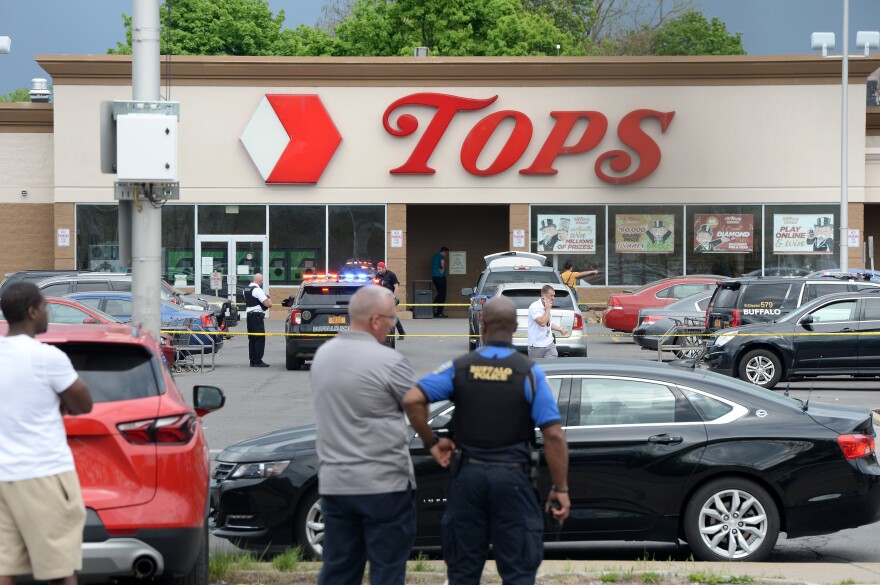The 18-year-old gunman accused of killing 10 at a grocery store in Buffalo, N.Y., had undergone a mental health evaluation by New York state police after making a school shooting threat last year, authorities said.
"The state police responded. They investigated. They interviewed the subject. And they felt at the time it was appropriate to have that individual brought in for a mental health evaluation," said Buffalo police commissioner Joseph Gramaglia at a press conference Sunday.
The threat was made in June of last year in the area of the alleged shooter's hometown of Conklin, N.Y., a small town near the state's border with Pennsylvania.
But the threat was a general one, not directed at any specific person or place, authorities said. After a day and a half in the hospital, the suspected shooter was released.
Authorities would not say when the suspect acquired the three guns he brought to Buffalo, or whether he had done so before or after the mental health evaluation.
In addition to the Bushmaster AR-15-style assault rifle used in the shooting, police recovered a second rifle and a shotgun from his car. The suspect also used a high-capacity magazine, which is illegal in New York, meaning it was illegally purchased or illegally transported across state lines, said Gov. Kathy Hochul.
The shooting at the Tops supermarket in east Buffalo left 10 people dead and three others wounded. Eleven of the victims were Black.
Officials say the attack was racially motivated, and it is being investigated as a hate crime and an act of terrorism. The suspect has already been charged with first-degree murder.
"The evidence that we have uncovered so far makes no mistake that this is an absolute racist hate crime. It will be prosecuted as a hate crime. This is someone who has hate in their heart, soul and mind," Gramaglia said.
Authorities say the suspect drove more than 200 miles from Conklin to east Buffalo specifically to target a predominantly Black part of the city. He arrived Friday to conduct "reconnaissance" on the grocery store, police said.
Then, around 2:30 p.m. on Saturday, he stepped out of his car wearing body armor and a helmet and began shooting with the Bushmaster rifle.
Four of those killed were store employees, authorities said. That included Aaron Salter, a retired Buffalo police lieutenant working as a store security guard. Salter fired back, striking the shooter at least once — but the bullet failed to penetrate the gunman's body armor. The rest of the victims were customers.
Buffalo police responded within two minutes, according to Buffalo Mayor Byron Brown. "If not for their swift response and courageous actions, more lives probably would have been lost yesterday," Brown said.
Eventually, the shooter was confronted by Buffalo police and arrested after they persuaded him to drop his gun. "He put the gun underneath his chin, and our officers very courageously used every de-escalation tactic they could," Gramaglia said.
He had a "premeditated plan to come to a community that he perceived to be a Black community and kill as many Black people as he possibly could," Brown told NPR.
A 180-page document shared online by someone using the same name as the alleged shooter was filled with racist and anti-immigrant views, including a racist conspiracy theory called the "great replacement" that holds that white Americans are supposedly at risk of being "replaced" by people of color.
The shooting was livestreamed on the streaming platform Twitch, a spokeswoman for the company told NPR. The stream was taken offline less than two minutes after the shooting began, Twitch said.
Copyright 2022 NPR. To see more, visit https://www.npr.org.




